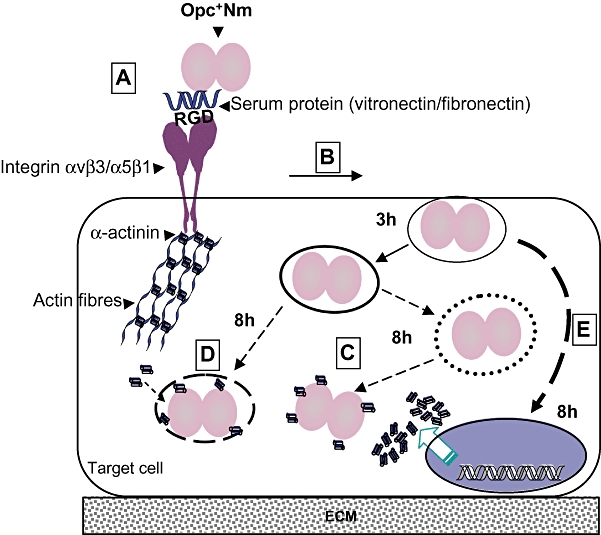Fig. 7.

Putative events during infection of human cells by Opc+ Nm that may lead to Nm/α-actinin interactions. Opc-expressing Nm interact with integrin receptors (A) at the apical surface of endothelial cells (an RGD-bearing serum protein-dependent event) leading to invasion via binding to integrins and receptor-mediated endocytosis (B). Once inside the cell, over a period, possible intracellular growth, the degradation of the vacuole and escape of bacteria into the cytoplasm could lead to α-actinin/Nm binding (C). (This may also be observed in the event that Nm remain largely in a vacuole and occasionally become free in the cytoplasm where interaction with α-actinin may occur.) Alternatively, it is possible that α-actinin localizes at the vacuolar membrane as α-actinin can insert into phospholipid bilayers; the phagocytic vacuole may be modified and occasional entry of α-actinin into the vacuole may result in α-actinin/Nm interactions (D). The interaction may be enhanced by upregulation of α-actinin at later time points after cellular invasion (E). In vitro evidence for the possible occurrence of most of these events has been described in Discussion; broken lines are used where no direct evidence is available at present to link the events.
